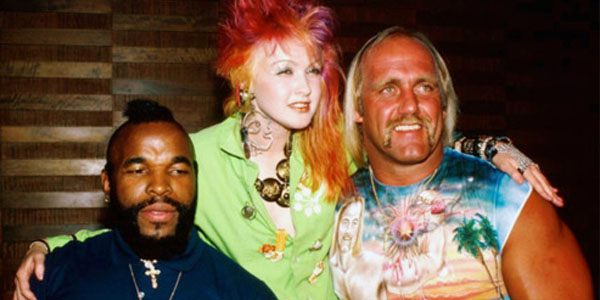How WrestleMania Almost Killed WWE

Whatever perfect was or is, WrestleMania had to be it. It had to be perfect.
It had to be a sell-out. It had to be a massive success on closed-circuit television (an early form of pay-per-view where fans could watch the event in theatres and arenas across the country). It had to prove that wrestling wasn’t just regional entertainment but mainstream spectacle. It had to make those that had gambled on it come back for more.
Vince McMahon didn’t just invest WWE’s money into WrestleMania; he invested everything. Every available resource went into making the show look as big as possible. If WrestleMania failed, there was no backup plan. There was no Plan B. The death or glory nature seemed to inspire the biggest and boldest strides, and - as was so often the case in McMahon's career - required as much luck as judgment.
WWE needed to feel like it formed part of the pop culture landscape. This was where MTV came in. The early 1980s was a golden era for the network, having launched in 1981 and almost immediately revolutionised music through the advent of music television. Music videos became cultural milestones, and MTV was defining what was cool for an entire generation. McMahon saw an opportunity took a big swing. He convinced pop star Cyndi Lauper to get involved with wrestling. Lauper and her manager David Wolff became entangled in a storyline with Lou Albano, leading to the “Brawl to End It All” on MTV in 1984, where Wendi Richter defeated the Fabulous Moolah for the WWF Women’s Championship to end a kayfabe 26-year title reign. The event pulled incredible ratings, leading to a follow-up, “The War to Settle the Score,” which further cemented wrestling’s presence on MTV and helped set the stage for WrestleMania thanks to Piper and Hogan's ongoing rivalry dominating the numbers and the conversation.
Both events took place at Madison Square Garden, establishing the Manhattan venue to the new audience as the destination for the action they had now taken more than a passing interest in. Madison Square Garden wasn’t just another arena - it was the arena. The Garden had long been the Mecca of professional wrestling, hosting legendary matches and sellout crowds. But more importantly now, it was a media hub. Getting mainstream coverage of an increasingly mainstream product required New York-based newspapers, television stations, and magazines to care. The location was perfect not only for its wrestling history but for its proximity to these major entertainment outlets, and with NBC and MTV headquartered there, celebrities and press would have easy access to the event, making it feel even more significant. The overlap effect was working too - Hogan and Richter were suddenly considered on the level of Lauper by the wider public, and when A-Team megastar Mr. T found himself folded into 'The Hulkster's rivalry with Roddy Piper, WWE was suddenly at the centre of a cultural earthquake it had smartly manufactured.
It was seeming too good to be true, but the contest of what brought The McMahons to this point is important - the high risk/high reward method was, to Vince at very least, a smoother road than some of the others he'd previously taken.
(CONT'D)